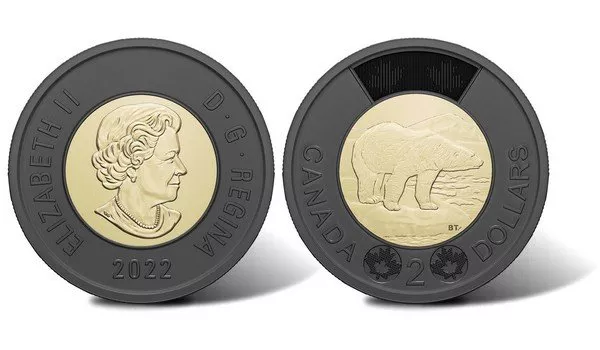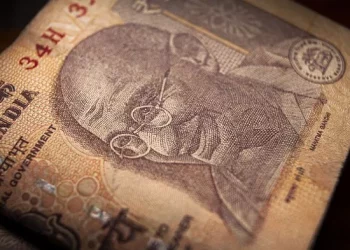The foreign exchange market, commonly known as forex, is a dynamic and complex environment where the value of one currency relative to another fluctuates continuously. Among the many currency pairs traded globally, the Canadian Dollar (CAD) to Indian Rupee (INR) exchange rate is of particular interest to both investors and businesses operating in these two countries. The exchange rate between CAD and INR plays a crucial role in international trade, tourism, investments, and remittances. In recent times, however, the CAD to INR exchange rate has been experiencing a downward trend, which has prompted many to ask the question: Why is CAD to INR decreasing?
This article will delve into the reasons behind the depreciation of the Canadian Dollar relative to the Indian Rupee, examining both domestic and international factors that influence the value of these currencies.
Understanding Currency Depreciation
Before analyzing the specific factors affecting the CAD to INR exchange rate, it is essential to understand what currency depreciation means. Currency depreciation refers to a decrease in the value of one currency relative to another. In the case of CAD to INR, a decrease in the value of CAD means that it takes more Canadian dollars to purchase one unit of Indian Rupee. In other words, the Canadian Dollar has weakened against the Indian Rupee.
Currency values are influenced by a wide range of factors, including economic performance, interest rates, inflation rates, political stability, trade balances, and more. Understanding these factors is crucial in comprehending why CAD is losing value against INR.
Factors Affecting the CAD to INR Exchange Rate
1. Economic Performance of Canada and India
One of the primary factors influencing the CAD to INR exchange rate is the economic performance of both Canada and India. A country’s economic health directly impacts its currency value, as a robust economy typically leads to a stronger currency, while a weaker economy can result in a depreciation of the currency.
Canada is a highly developed economy with a strong industrial base, a well-established financial system, and a significant global trade presence. However, its economy is heavily dependent on global commodity prices, particularly crude oil. Canada is one of the world’s largest oil producers, and fluctuations in the price of oil have a direct impact on the Canadian Dollar. A decline in global oil prices can result in a weaker Canadian Dollar, which may be one of the contributing factors to the depreciation of CAD against INR in recent times.
India, on the other hand, is one of the fastest-growing emerging economies in the world. India’s economy has been expanding rapidly in recent years, driven by factors such as a large and growing population, a burgeoning middle class, technological advancements, and a rise in foreign direct investment (FDI). As a result, India’s economic strength has contributed to the relative strength of the Indian Rupee, making the CAD to INR exchange rate more favorable for the Rupee.
2. Interest Rates and Monetary Policy
Interest rates set by central banks are another critical factor influencing currency exchange rates. In both Canada and India, the respective central banks—the Bank of Canada (BoC) and the Reserve Bank of India (RBI)—play a key role in determining the value of their currencies through monetary policy decisions.
Interest rates are a primary tool used by central banks to control inflation and stabilize the economy. When a central bank raises interest rates, it tends to attract foreign investment because higher rates offer better returns on investments denominated in that currency. This increased demand for the currency can lead to an appreciation in its value. Conversely, when interest rates are lowered, the currency may weaken as investors seek higher returns elsewhere.
In recent years, the Bank of Canada has maintained relatively low interest rates in response to global economic challenges, such as trade tensions and the COVID-19 pandemic. While the BoC has raised interest rates slightly in recent months, the overall policy stance has been accommodative, which can contribute to a weaker Canadian Dollar.
Meanwhile, the Reserve Bank of India has been more proactive in its monetary policy. Although India also faced economic challenges, the RBI’s actions, including managing inflation and promoting growth through monetary easing, have helped stabilize the Indian Rupee. In some periods, the RBI has raised interest rates to curb inflationary pressures, which can make the Rupee more attractive to foreign investors. This contrast in monetary policy between the two countries can contribute to the CAD to INR exchange rate movement.
3. Global Commodity Prices
Canada’s economy is highly dependent on the export of natural resources, particularly oil, minerals, and timber. As mentioned earlier, fluctuations in global commodity prices, especially oil, can have a significant impact on the value of the Canadian Dollar. When oil prices rise, Canada benefits from increased revenues from its oil exports, leading to a stronger CAD. Conversely, when oil prices fall, Canada’s export revenues decrease, which can put downward pressure on the Canadian Dollar.
In recent years, global oil prices have been volatile. While oil prices experienced a significant rebound after the initial shock of the COVID-19 pandemic, they have remained susceptible to geopolitical tensions, supply chain disruptions, and changes in global demand. A prolonged period of lower oil prices or a decline in global demand for commodities could weigh heavily on the Canadian economy and, by extension, the Canadian Dollar.
India, however, is a net importer of oil and other commodities. The country relies heavily on imports for its energy needs, making it vulnerable to fluctuations in global commodity prices. When global commodity prices rise, India’s trade balance may worsen, leading to a potential depreciation of the Indian Rupee. On the other hand, lower commodity prices can help reduce India’s import bills, providing support to the Rupee.
4. Trade Balance and Current Account Deficits
The trade balance refers to the difference between a country’s exports and imports. A country with a trade surplus (exports greater than imports) typically sees an appreciation in its currency, while a country with a trade deficit (imports greater than exports) may experience a depreciation in its currency. Both Canada and India have trade balances that significantly impact their respective currencies.
Canada’s trade balance has historically been influenced by its exports of commodities, particularly oil, natural gas, and timber. As a major exporter of these resources, Canada’s trade balance tends to improve when global demand for these commodities is high. However, Canada has also faced challenges related to trade imbalances, particularly with its largest trading partner, the United States. Any disruption in trade relations or a decline in commodity exports can lead to a negative trade balance, which can weaken the Canadian Dollar.
India, as a developing economy, has traditionally had a trade deficit due to its reliance on imports of oil, machinery, and other goods. However, in recent years, India’s trade deficit has been narrowing, partly due to an increase in exports of services, particularly information technology (IT) services. A narrowing trade deficit can provide support to the Indian Rupee, making it more resilient against global economic pressures.
5. Geopolitical Risks and Global Market Sentiment
Geopolitical events, such as political instability, military conflicts, and changes in global market sentiment, can have a significant impact on currency values. Both Canada and India are not immune to geopolitical risks, and events in other parts of the world can influence the CAD to INR exchange rate.
For instance, global market sentiment can be affected by factors such as trade wars, sanctions, or diplomatic tensions. The Canadian Dollar is often influenced by global risk sentiment, particularly when it comes to commodity prices. In times of heightened geopolitical risk, investors may move their assets to safe-haven currencies like the US Dollar or the Swiss Franc, leading to a depreciation of riskier currencies like the Canadian Dollar.
India, as a large emerging market, is also exposed to global economic shocks and geopolitical risks. Changes in global risk sentiment can impact foreign direct investment flows, trade relations, and investor confidence in India, affecting the value of the Indian Rupee.
6. COVID-19 Pandemic and Economic Recovery
The COVID-19 pandemic has had a profound impact on the global economy, including both Canada and India. The pandemic caused severe disruptions in international trade, led to economic contractions, and prompted central banks to adopt accommodative monetary policies to support economic recovery. In the case of Canada, the pandemic led to a sharp decline in global demand for oil, further exacerbating the weakness of the Canadian Dollar. Meanwhile, India’s economy also suffered from the pandemic’s impact but showed resilience in the face of challenges, with the government implementing measures to stimulate recovery.
As both countries continue to recover from the pandemic, the pace of recovery will influence the CAD to INR exchange rate. A stronger recovery in India, supported by robust domestic consumption and a growing digital economy, could help bolster the Indian Rupee against the Canadian Dollar.
Conclusion
The decreasing value of CAD relative to INR is the result of a combination of domestic and international factors. Canada’s dependence on commodity exports, particularly oil, means that fluctuations in global commodity prices have a significant impact on the value of the Canadian Dollar. Additionally, the contrasting monetary policies of Canada and India, the trade balances of both countries, and geopolitical risks all play crucial roles in determining the CAD to INR exchange rate.
While the Canadian Dollar has experienced downward pressure against the Indian Rupee, it is important to remember that exchange rates are highly volatile and can change rapidly based on economic conditions, investor sentiment, and geopolitical developments. Forex traders and investors should stay informed about global market trends and economic indicators to make informed decisions regarding the CAD to INR currency pair.
Understanding the underlying factors behind currency movements is key to navigating the complexities of the foreign exchange market.
Related Topics:




























